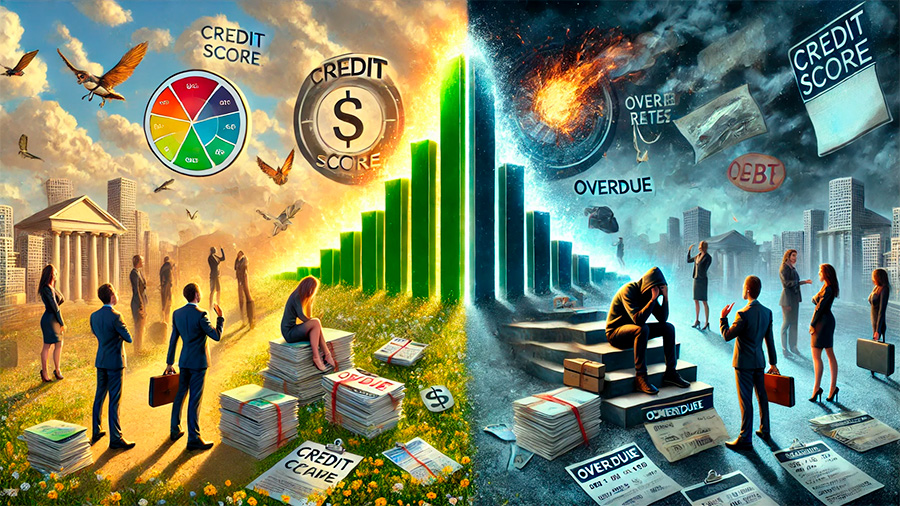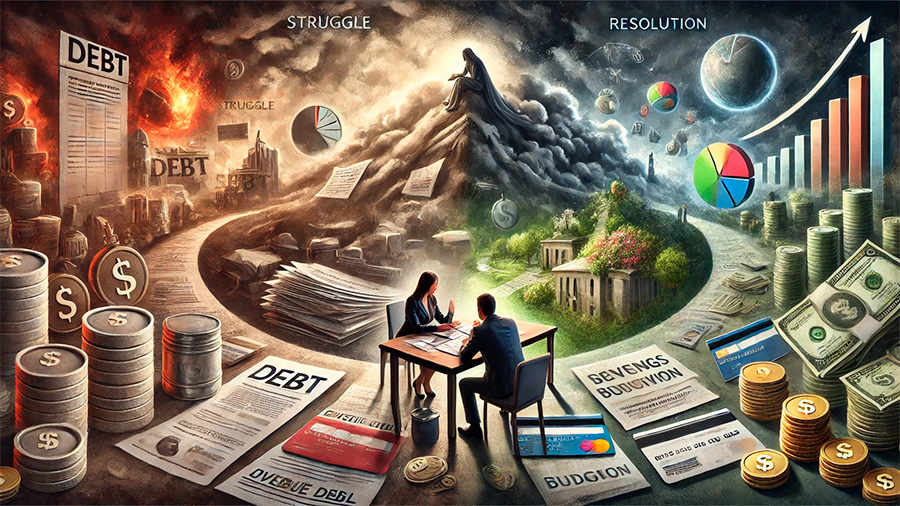In recent years, borrowing has become more accessible and widely accepted in the United States, with loans playing a critical role in financing everything from homes to education to consumer goods. While loans have provided individuals and businesses with much-needed capital, the widespread popularity of borrowing carries hidden consequences that can significantly impact personal finances, credit scores, and even long-term financial well-being. This article delves into the often-overlooked repercussions of widespread borrowing, including the risks associated with debt cycles, the impact on credit scores, and the broader financial health of borrowers.
The Rise of Loan Popularity in America
Loans, from mortgages to student loans to personal lines of credit, are now an integral part of American life. With easy access to credit, many individuals and businesses have leveraged borrowing to achieve immediate goals such as purchasing homes, funding education, or starting businesses. However, as loan availability increases, the propensity to borrow has led to rising debt levels, which may not always align with the borrower’s long-term financial stability.
1. The Culture of Borrowing
The growing trend of borrowing is largely driven by economic factors such as low interest rates, the expansion of credit products, and the normalization of debt in modern culture. While borrowing is often portrayed as a way to enhance financial well-being, the reality is that excessive debt can have a range of negative consequences that are frequently overlooked.
Key factors driving loan popularity:
- Low-interest rates: In times of economic stability, low interest rates encourage borrowing by making loans more affordable and attractive.
- Easy credit access: Credit cards, student loans, and other personal loans are readily available, often with few questions asked, contributing to higher borrowing rates.
- Consumer culture: The idea of “buy now, pay later” has become entrenched in American society, with borrowing seen as a way to finance lifestyle choices and immediate consumption.

Credit Scores and the Borrowing Paradox
A key component of borrowing in the U.S. is the impact on credit scores. Credit scores determine an individual’s access to future loans and interest rates. While responsible borrowing can help improve a credit score, excessive or mismanaged borrowing can severely damage it, resulting in financial challenges that persist for years.
1. The Impact of Excessive Borrowing on Credit Scores
While borrowing can help build a credit score when managed responsibly, it can also have negative consequences if not carefully controlled. When individuals fail to meet repayment deadlines or overextend their credit limits, it leads to a decline in creditworthiness, making future borrowing more expensive and difficult.
Consequences of poor credit management:
- Late payments: Missing loan payments, even once, can have a significant negative impact on a credit score, potentially lowering it by dozens of points.
- High credit utilization: If borrowers consistently use a high percentage of their available credit, it signals to lenders that they may be financially strained, which can lead to a decrease in credit scores.
- Defaulting on loans: If loans are defaulted on, it can result in long-lasting damage to credit scores and may even lead to legal actions, including wage garnishments or liens on assets.
2. The Long-Term Financial Burden of Poor Credit
The long-term effects of a damaged credit score go beyond the immediate inability to secure loans. Individuals with poor credit scores are often forced to pay higher interest rates on loans and credit cards, increasing their financial burden and extending the time it takes to pay off debts.
Consequences of poor credit for future borrowing:
- Higher interest rates: Those with poor credit scores often face much higher interest rates, leading to increased costs for borrowing, whether it’s for a mortgage, car loan, or personal loan.
- Limited access to credit: With a low credit score, borrowers may struggle to qualify for loans, forcing them to seek alternatives such as high-interest payday loans or subprime lending options.
- Job and housing challenges: Poor credit scores can also affect job opportunities, particularly in roles that require financial responsibility, and can make it harder to rent or purchase a home.

The Debt Cycle: A Dangerous Pattern
For many borrowers, loans can create a vicious debt cycle where individuals borrow to pay off existing debt, leading to an ever-growing financial burden. This cycle of borrowing and repayment can prevent individuals from achieving financial independence and lead to chronic financial insecurity.
1. The Cycle of Borrowing to Repay
A major consequence of excessive borrowing is the tendency to take on new loans to repay old debts. This is especially common with credit card debt, personal loans, and payday loans, where individuals take out additional credit to cover monthly payments, leading to a continuous cycle of borrowing.
How the debt cycle works:
- Debt consolidation: Some individuals turn to debt consolidation loans to simplify payments, but this often leads to higher overall debt if the underlying spending habits are not addressed.
- High-interest loans: Using high-interest loans, such as payday loans, to pay off other debt can worsen financial strain and escalate borrowing costs.
- Increased reliance on credit: Without addressing the root causes of debt, individuals may continue relying on credit to meet financial obligations, accumulating more debt over time.
2. Breaking the Debt Cycle
Breaking free from the debt cycle requires careful financial planning and discipline. While state-backed loan programs and financial counseling services can help, it is ultimately up to individuals to adopt healthy borrowing habits and commit to paying down existing debt before taking on more.
Steps to break the debt cycle:
- Debt repayment strategies: Implementing a debt repayment strategy, such as the avalanche or snowball method, can help prioritize high-interest debts and reduce overall borrowing costs.
- Building an emergency fund: Establishing an emergency savings fund can reduce the need for borrowing in the event of unexpected expenses, allowing individuals to stay financially stable.
- Avoiding new debt: After reducing existing debt, it is crucial to avoid taking on new debt until financial stability is achieved.
The Broader Economic Implications of Loan Popularity
The widespread popularity of loans does not only affect individuals and households; it also has far-reaching effects on the economy. A significant portion of consumer spending is financed through loans, but when borrowing reaches unsustainable levels, it can lead to broader economic instability.
1. Strain on National Debt and Financial Institutions
As borrowing increases, so does the amount of consumer debt, which can lead to a broader economic strain. Financial institutions may face increased risk of defaults, while governments may need to intervene to ensure financial stability. Excessive household debt can also slow economic growth, as individuals spend more on servicing debt rather than contributing to the economy through consumption.
Implications of widespread borrowing on the economy:
- Increased default risk: When borrowers default on loans, financial institutions face higher risk, potentially leading to tighter lending conditions and higher interest rates.
- Reduced consumer spending: As more income is allocated to debt repayment, consumer spending decreases, impacting economic growth and potentially contributing to recessions.
- Government intervention: In some cases, governments may step in to offer relief programs or stimulus measures to prevent widespread defaults and maintain economic stability.
2. Economic Inequality and Financial Exclusion
The ease of access to loans also contributes to economic inequality. While some borrowers may benefit from low-interest loans and favorable terms, others, particularly those with poor credit scores or lower incomes, may face exclusion or be forced into predatory lending situations.
The impact on economic inequality:
- Predatory lending: Low-income or subprime borrowers often fall victim to predatory lending practices, such as payday loans or high-interest credit, trapping them in cycles of debt.
- Disparity in access to credit: Those with poor credit histories or lower incomes may be excluded from borrowing opportunities, limiting their ability to invest in housing, education, or other wealth-building assets.
Conclusion
While loans provide numerous benefits by enabling individuals to make large purchases, invest in education, and meet personal needs, the hidden consequences of widespread borrowing are significant. The rise of loan popularity in America has led to higher levels of debt, which can negatively impact credit scores, lead to debt cycles, and strain personal and national finances. By understanding these consequences and taking steps to manage debt responsibly, individuals can safeguard their financial well-being and contribute to a more stable and sustainable economy.
